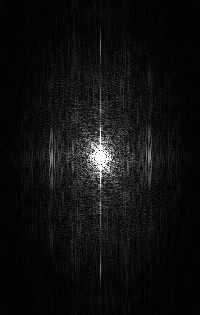
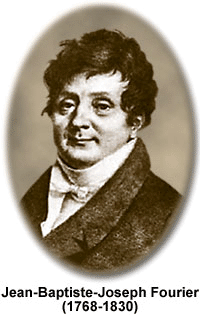
Fourier Transform and Applications
- Part 1
ECE generic Han Q. Le (c)


1. Introduction: numerical discovery approach
1.1 Run the app demo
We have made music and see a sound note can be a ďfairlyĒ periodic function:
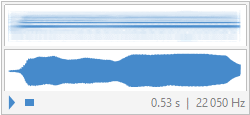
sound
signal Fourier
transform

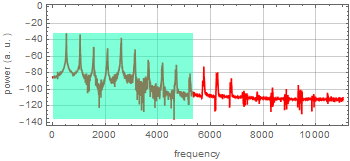
zoom in to see the periodic signal

What is most remarkable is that the Fourier
spectrum shows many peaks that have periodic spacing. It means
that the sound signal can be written as:
 (1.1.1)
(1.1.1)
where f is the
fundamental frequency found below:
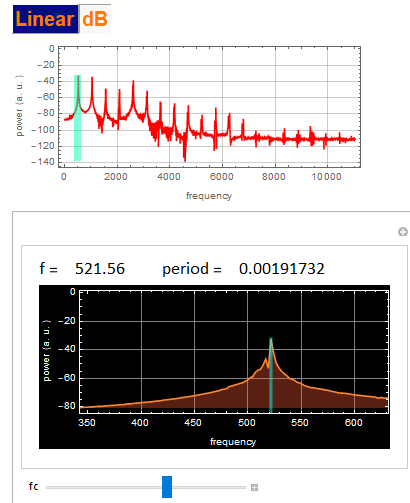
and p are the number of peaks that are above the ďfuzzyĒ noise floor.
Are those peaks are really regularly spaced? We can check by plotting:


1.2 Construction of the signal
Letís use Eq. (1.1.1) to reconstruct the signal. Since the signal is over a long duration with some slight variation, weíll choose a narrow interval as show below:
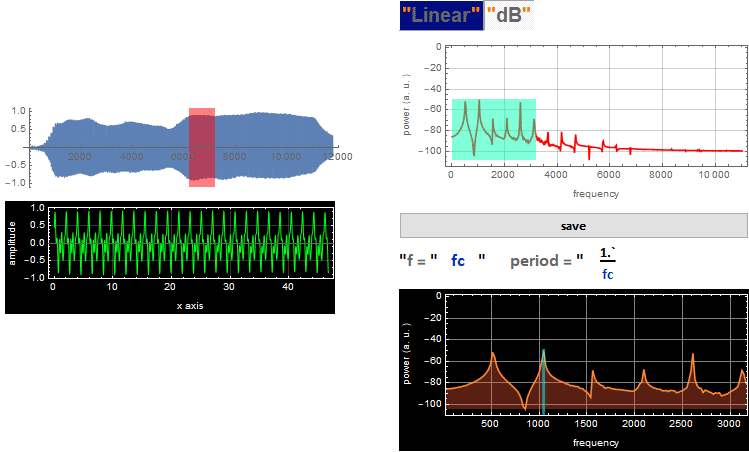
Over this range of signal:

| Best-fitted fundamental frequency (Hz) | 522.146 |
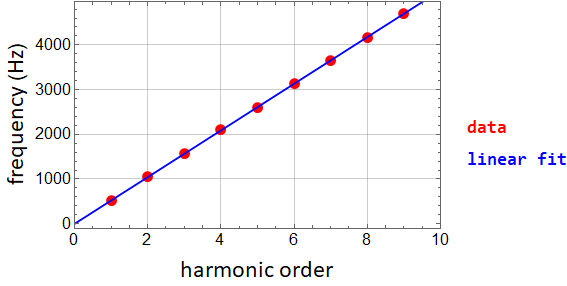
Letís look at the Fourier components:
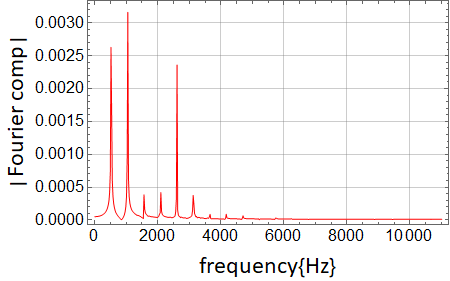
Here are the Fourier component ![]() :
:

![]()
Now, we just apply the formula:
 (1.1.1)
(1.1.1)
One more thing: we donít have to sum from -p to p like the equation says. Because the signal is real, we can just add the positive p components and take the Real part.
So, this is the synthesize signal:

Letís plot our synthesized signal (yellow) to compare with the original (green):
 |
 |
Pretty close, given that we use a mere 9 components out of 515. This what they sound like:
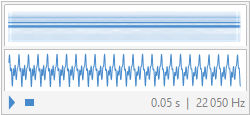
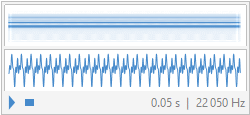
2. Fourierís theorem: an example
2.1 Discussion
Is it true that any periodic function can be expressed as a sum of harmonics with frequencies that are integral multiples of the fundamental frequency? Yes, that is exactly what Fourierís theorem says,...
which means that we can represent a periodic
function as a series, known as Fourierís series
 ;
;
 (2.1.1)
(2.1.1)
where T is the period,
and the Fourier series coefficient is obtained as
 (2.1.2)
(2.1.2)
It is quite easy to construct a periodic function. All we have to do is to define it over one period, and repeat it. In programming language,we use modulo function so that the variable repeating itself after each period.
Consider as an example this simple function:
 for
t ∈[-0.5,0.5]
for
t ∈[-0.5,0.5]
which can also be written as:

2.2 An example
2.2.1 Plot the function
2.2.2 Obtain Fourier coefficients
Letís apply Fourierís theorem to it. The Fourierís
theorem says first, we should obtain the coefficient:


| |
|
Hence, the Fourier coefficient is: 
But we can simplify it a bit:






Hence, the Fourier coefficient is:

or

Why do we use Sinc function? just for this simple reason



![]()
2.2.3 Apply the Fourierís theorem numerically
Code
3. Fourier signal synthesis
Can we use Fourierís theorem to synthesize a signal? Certainly!
3.1 Example 1: signal synthesis concept
3.2 Example 2
4. Basic concept of Fourier analysis for a LTI system

A periodic signal can be decomposed into a sum of its Fourier components
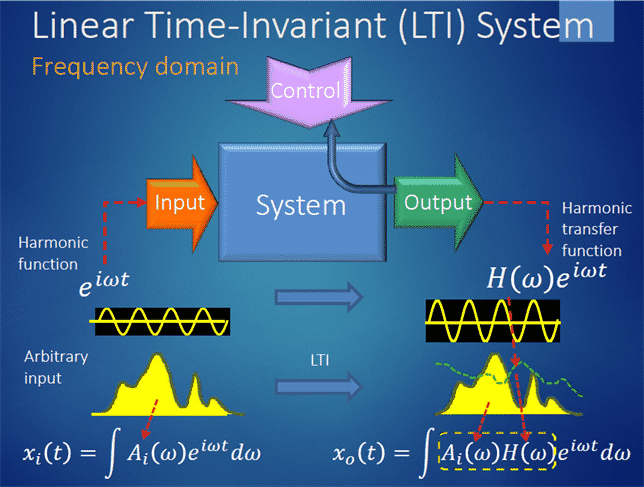
With known system response, we know the output of each component. Remember this?
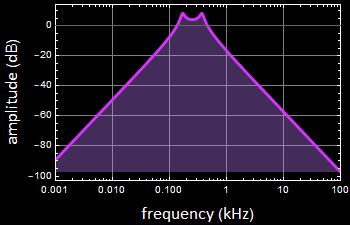 |
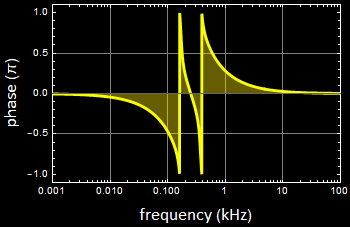 |
All we have to do is to add them up! See illustration below
4.1 Illustration of passive RC with Bode plots
4.2 Illustration of passive RC with Fourier analysis
To be continued to Part 2 - Fourier integral transform